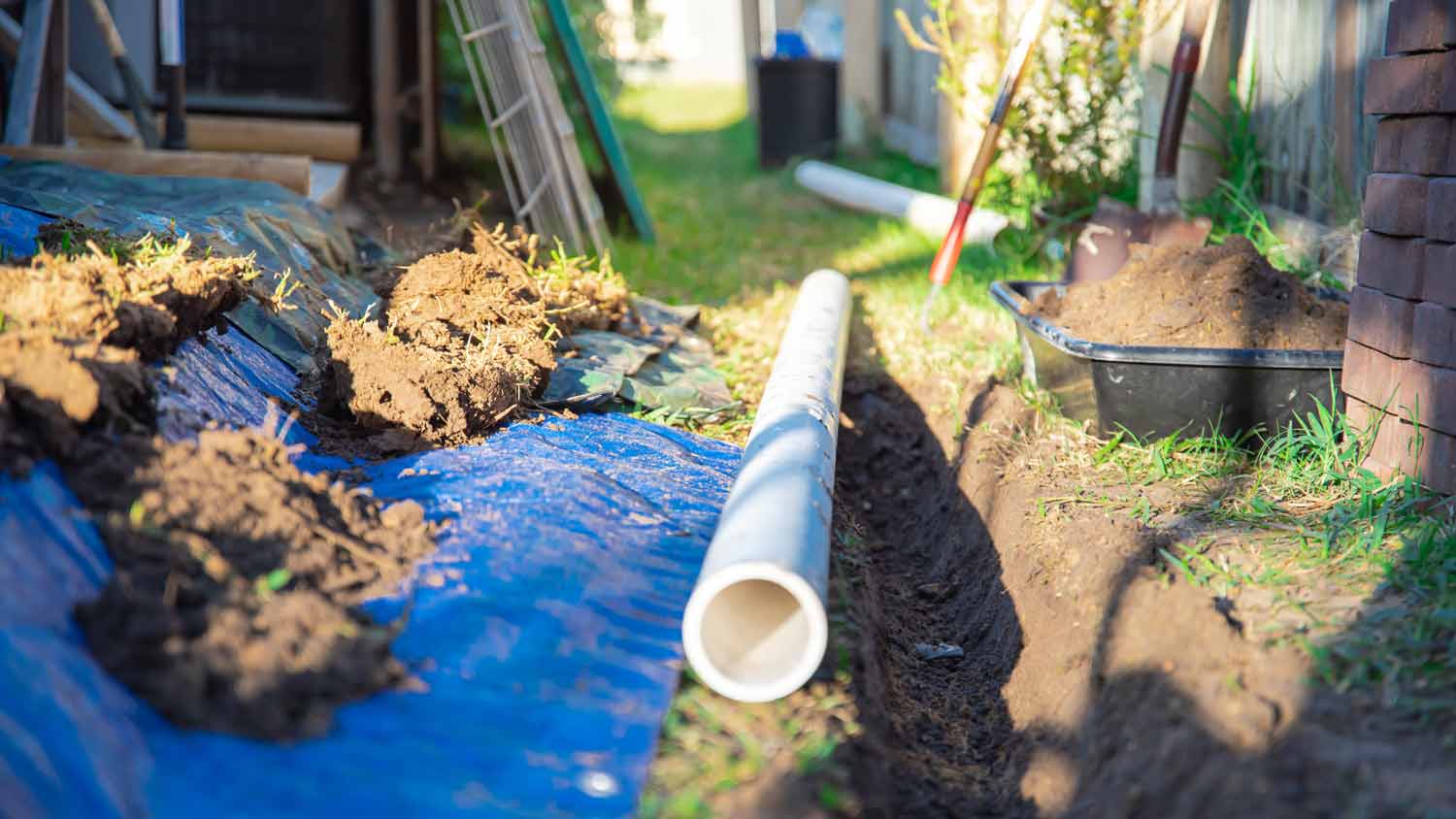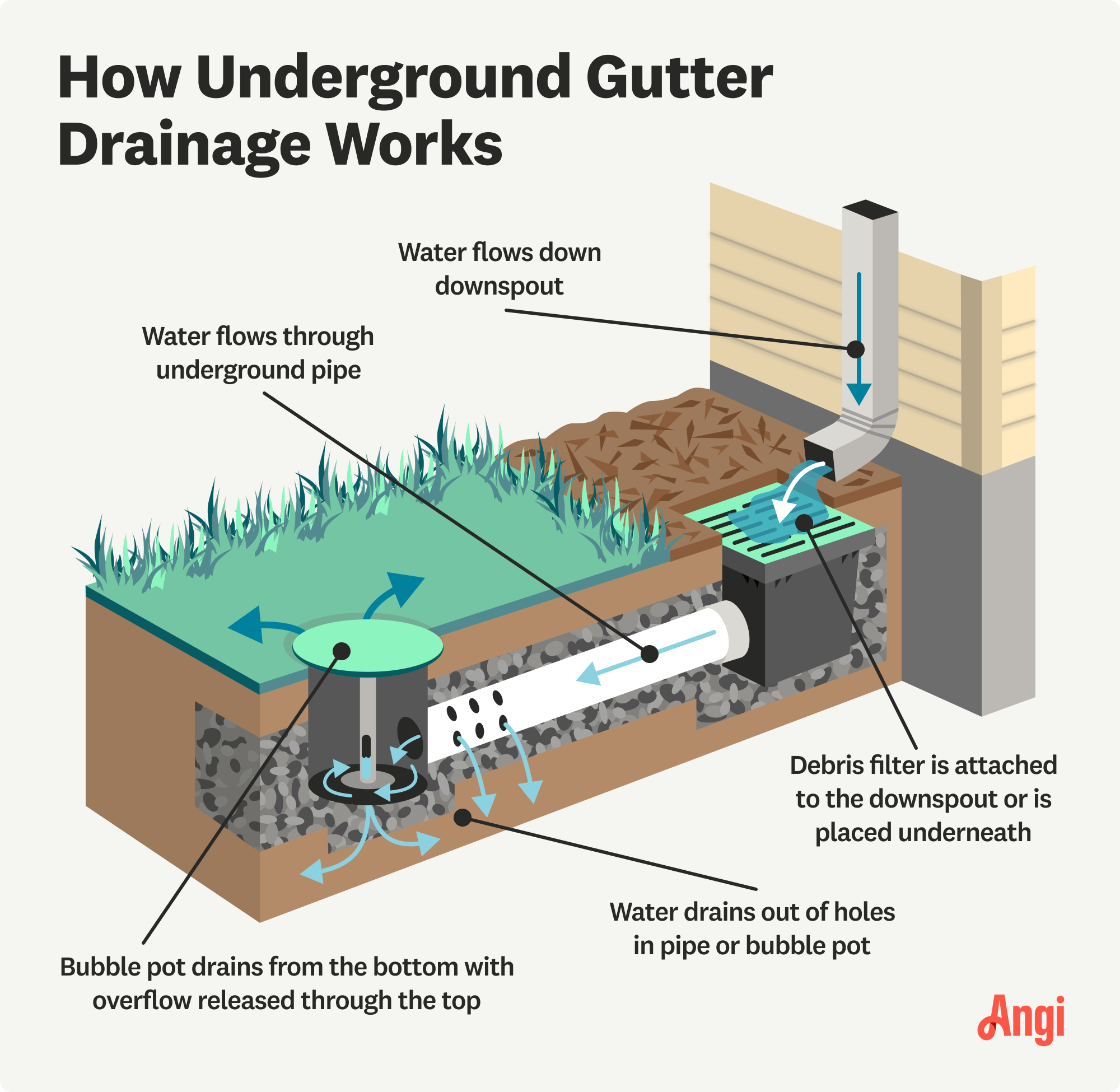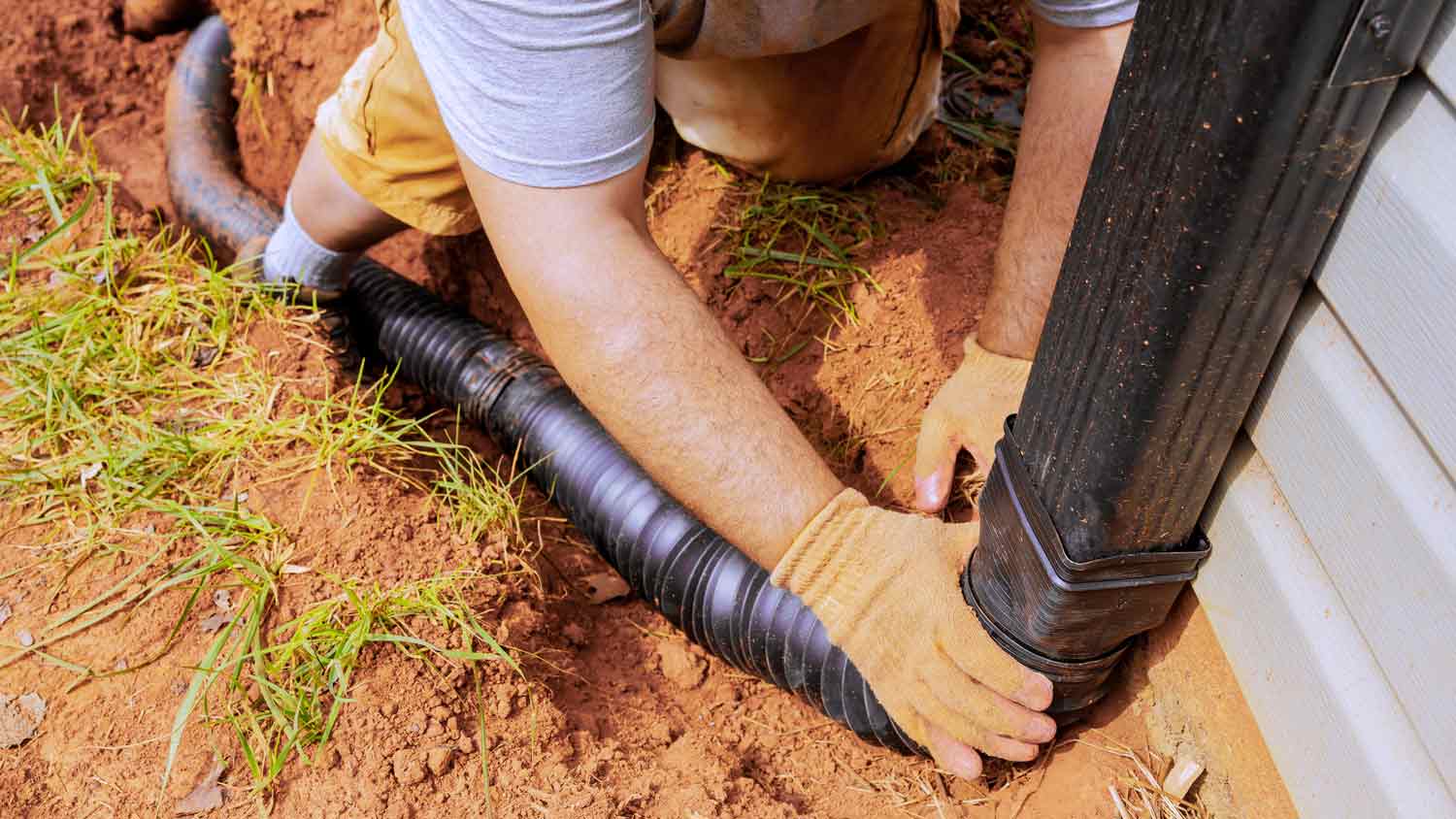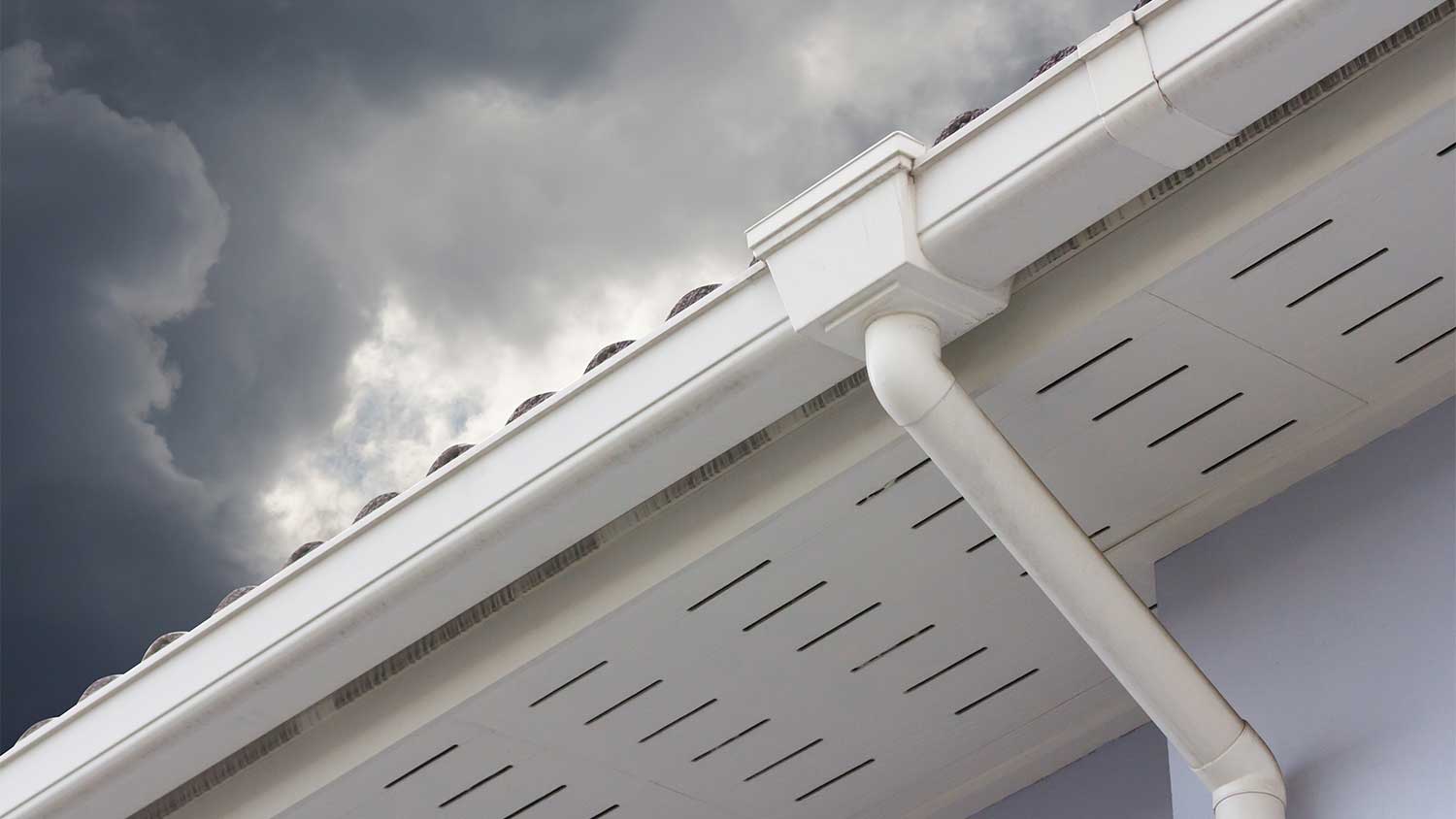How Much Does It Cost to Install Underground Gutter Drainage? [2025 Data]
The cost to install underground gutter drainage is $2,800 on average, but can range between $2,200 and $3,300, depending on materials used, type of drainage system, and the size of your house.


The average cost to install underground gutter drainage is $2,800, though homeowners can spend between $1,500 and $7,000. Sometimes the most impactful parts of a home are what you don’t see—the foundation, electrical, insulation, and plumbing. The last thing you want to deal with is flood damage, so while underground gutter drainage costs may seem high, they don’t hold a candle to the damage excess water causes over time.
Underground Gutter Drainage Cost Factors

A worst-case scenario for any homeowner is damage to their foundation. Since this is often caused by water, ensuring the rain that lands on your roof drains away from your home is extremely important. Instead of having the water from your roof deposit at the base of your walls, extending it away from the home makes a massive difference in preserving your foundation.
Types

The most common type of underground gutter drainage is a downspout extension. This involves affixing a large pipe to your downspout opening and running that pipe far away from your house, diverting water from the downspout as far from your foundation as possible.
Most homes will have one to four downspout extensions. This means that every vertical drainage pipe connected to a gutter junction will have a corresponding underground drainage line. However, you can join downspouts together in order to save money.
There are several ways to do this, each differing in cost. The most expensive is to extend each downspout into the yard, each with its own drainage spout. More commonly, downspouts are connected before depositing their water down a single underground extension piece, releasing water in only one area of the yard.
| Individual Extensions | Connected Extensions |
|---|---|
| More drainage options | Less expensive |
| Spreads drainage across multiple areas | More common |
| More expensive | Pools all drainage to one spot |
| Easier to diagnose leaks | Easier to avoid when digging |
Size
A downspout is recommended for every 30 to 40 linear feet of gutters. That means that an average home will have between two and four downspouts. Larger homes will require more—as many as six.
While connecting downspouts together and having them drain through one extension can save money, some homeowners may want the customizability and spread-out drainage that multiple extensions provide.
| Number of Drainage Extensions | Average cost |
|---|---|
| 1 | $800–$2,000 |
| 2 | $1,200–$2,200 |
| 3 | $1,800–$3,000 |
| 4 | $2,400–$3,400 |
| 5 | $3,000–$4,200 |
| 6 | $3,600–$5,700 |
Materials
The most expensive material used when installing an underground gutter drainage system is the pipe. There are a number of options, so while PVC may be cost-effective and durable, there are also reasons to consider metals like aluminum or steel or even older materials like clay (when restorations limit materials used).
That being said, most underground drainage pipes are PVC since they are low-cost, seldom crack, are easy to transport and install, and hold up well to cleaning. Unless there is a specific reason to use a different material, we recommend using PVC.
| Material | Average Cost for 10 Linear Feet |
|---|---|
| PVC | $9–$30 |
| Aluminum | $20–$55 |
| Galvanized steel | $30–$60 |
| Clay | $25–$80 |
| Cast iron | $50–$120 |
Labor
Labor costs to hire a local gutter pro will vary depending on your location, the availability of contractors, and the complexity of the project, but homeowners can expect to pay hourly rates between $50 and $100 per hour. These costs increase if special digging machinery is required, but this isn’t often the case.
Prep
Assuming you’re letting a pro handle the installation—and we recommend you do—the prep work just involves cleaning the area of any obstacles and making sure there are no large rocks or plants in the drainage path. If soil testing is required, a pro will do it. They may also mark the dig lines before initiating work,
Location
Not all homes are built on flat lots with arable soil. Factors that complicate the project (and add to the cost) include sloped land, hard soil or stone, sidewalks, driveways, and other buried additions like plumbing, electric dog fences, and sometimes other electrical work.
Post-Construction Cleanup
This is an important part of this job as a significant amount of soil will be moved, and you’ll need somewhere to put it. Some homeowners are perfectly fine just mounding it in an unused part of their yard. Other uses might include raised garden beds, filling in other depressions in the soil, or simply spreading it over your entire lawn. While it’s possible to remove it from your property entirely this carries added cost.
Permits
Unlike other projects that always require permits, whether or not you need one for an underground gutter drainage system will depend on your municipality. Your pro should know, but it doesn’t hurt to double-check since it only involves a single call to your city’s permit office. If one is required, expect to pay between $300 and $1,500 for the permit.
Underground Gutter Drainage Ongoing Costs
Expect ongoing maintenance costs to come with your underground gutter drainage system. Here’s a look at some common expenses you should budget for.
Maintenance

Maintenance is fairly straightforward and involves paying attention to drainage. If you notice proper drainage where you want it, you most likely don’t need to do any maintenance. However, consider cleaning out your system at least twice a year to keep buildup to a minimum. You can DIY this, but consider having a pro check your system once a year. It shouldn’t cost more than $75 to $120.
Repairs
Most repairs of an underground gutter drainage system are minor and are caused by one of two things: a cracked or damaged pipe, or a buildup of debris or sediment. Depending on the repair, expect to pay between $200 and $600, with repairs being more expensive if large sections need to be dug up and replaced.
Insurance
Homeowners' insurance may cover damage to this system, but you need to check with your home insurance company. Don’t automatically assume that because it’s a part of your home, it’s covered. However, you may be able to lower your premiums regarding flood coverage if you can prove to your insurance company it significantly lowers flood risk (and corresponding damage).
DIY Underground Gutter Drainage Installation vs. Hiring a Pro
It’s best to hire a gutter specialist near you to install your underground gutter drainage system. Even though it seems relatively simple, installing underground gutter drainage is not a DIY job in any sense. The work requires expertise both to ensure it’s installed correctly but also to make sure there’s no potential for damage to your property.
Additionally, professional work carries a number of warranties that a DIY wouldn’t (or would actually void). Homeowners often breathe sighs of relief when there’s an issue and they remember they’re covered by warranty. In essence, don’t DIY this work as you might end up on the wrong side of a costly scenario.
Tips to Reduce Cost While Installing Underground Gutter Drainage
Unfortunately, there aren’t many places to save when installing underground gutter drainage. For most homeowners, the PVC piping they will choose won’t be very expensive and so the larger portion of the total cost will be labor, which is notoriously difficult to negotiate.
You’ll need to get creative if you want to save some cash. Consider the following:
Doing all prep and cleanup yourself (except digging).
Buy everything at once and get a bulk discount.
Plan drainage around landscaping—don’t remove any.
Plan drainage where no additional ground leveling is required.
Install during the off-season.
How Angi Gets Its Cost Data
Home is the most important place on earth, which is why Angi has helped more than 150 million homeowners transform their houses into homes they adore. To help homeowners with their next project, Angi provides readers with the most accurate cost data and upholds strict editorial standards. We extensively research project costs to develop the pricing data you see, so you can make the best decisions for you and your home. We rely on reputable sources, including the U.S. Bureau of Labor Statistics, academic journals, market studies, and interviews with industry experts—all to ensure our prices reflect real-world projects.
Want to help us improve our cost data? Send us a recent project quote to costquotes@angi.com. Quotes and personal information will not be shared publicly.
Frequently Asked Questions
The best drainage system deposits rainwater as far away from your house as possible. This limits foundation damage but also helps prevent the discovery of inches of water from a leak when you look in your basement. There are some drainage options, like French drains—a perforated pipe that releases water across a line of small stones—but the best option is always a long pipe that releases water far from the house.
A full gutter system, or even a full gutter replacement, costs homeowners an average of around $1,200. This is a very rough number based on the average-sized home with a typical roof build, using vinyl gutters. This average also assumes the roof is in good condition, as you can’t hang new gutters on a rotting or sloping roof. Factors that increase cost are metal gutters, larger homes, and unique gutter styles.
Gutters are part of a home (much like a foundation) so adding them doesn’t increase the value of your home, and not having them certainly will lower your home’s value. If you need to replace or repair your gutters, your main thought should be related to how doing so can prevent costly damage later. A newly installed system can be mentioned if you’re selling and it may help a buyer decide to purchase your home, but it wouldn’t increase your home’s numerical value.















